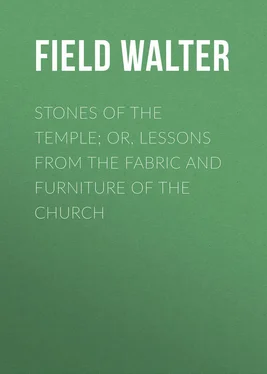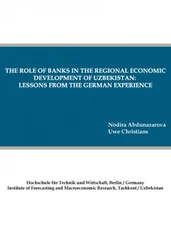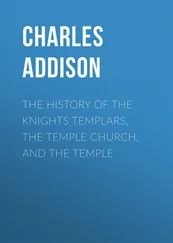Walter Field - Stones of the Temple; Or, Lessons from the Fabric and Furniture of the Church
Здесь есть возможность читать онлайн «Walter Field - Stones of the Temple; Or, Lessons from the Fabric and Furniture of the Church» — ознакомительный отрывок электронной книги совершенно бесплатно, а после прочтения отрывка купить полную версию. В некоторых случаях можно слушать аудио, скачать через торрент в формате fb2 и присутствует краткое содержание. Жанр: foreign_religion, Религиозная литература, foreign_antique, foreign_prose, на английском языке. Описание произведения, (предисловие) а так же отзывы посетителей доступны на портале библиотеки ЛибКат.
- Название:Stones of the Temple; Or, Lessons from the Fabric and Furniture of the Church
- Автор:
- Жанр:
- Год:неизвестен
- ISBN:нет данных
- Рейтинг книги:4 / 5. Голосов: 1
-
Избранное:Добавить в избранное
- Отзывы:
-
Ваша оценка:
- 80
- 1
- 2
- 3
- 4
- 5
Stones of the Temple; Or, Lessons from the Fabric and Furniture of the Church: краткое содержание, описание и аннотация
Предлагаем к чтению аннотацию, описание, краткое содержание или предисловие (зависит от того, что написал сам автор книги «Stones of the Temple; Or, Lessons from the Fabric and Furniture of the Church»). Если вы не нашли необходимую информацию о книге — напишите в комментариях, мы постараемся отыскать её.
Stones of the Temple; Or, Lessons from the Fabric and Furniture of the Church — читать онлайн ознакомительный отрывок
Ниже представлен текст книги, разбитый по страницам. Система сохранения места последней прочитанной страницы, позволяет с удобством читать онлайн бесплатно книгу «Stones of the Temple; Or, Lessons from the Fabric and Furniture of the Church», без необходимости каждый раз заново искать на чём Вы остановились. Поставьте закладку, и сможете в любой момент перейти на страницу, на которой закончили чтение.
Интервал:
Закладка:
CHAPTER VI
THE PORCH
"Why should we grudge the hour and house of prayer
To Christ's own blind and lame,
Who come to meet Him there?
Better, be sure, His altar-flame
Should glow in one dim wavering spark,
Than quite lie down, and leave His Temple drear and dark.
"What if the world our two or three despise
They in His name are here,
To whom in suppliant guise
Of old the blind and lame drew near,
Beside His royal courts they wait,
And ask His healing Hand: we dare not close the gate."
"The Vicar's first impulse, on recovering from his surprise at so unexpectedly meeting with the old Shepherd in such a place, at such an hour, was, if possible, to escape unnoticed, and to leave the churchyard without suffering him to know what he had heard and seen; but at that instant the light fell full upon him, and concealment was impossible.
"You'll be surprised, Mr. Ambrose," said the old man, "at finding me in the church at this late time. But it has, I assure you, been a great comfort for me to be here."
"My good friend," replied the Vicar, "I know you have been making good use of God's House, and I only wish there were more disposed to do the like. I rejoice to hear you have found consolation, for to-day has been one of heavy sorrow to you, and you needed that peace which the world cannot give . How often it is that we cannot understand these trials until we go into the House of the Lord , and then God makes it all plain to us."
"I've learnt that to-night, sir, as I never learnt it before. When I had put the last bit of turf on the little grave, and knew that all my work was over, there was such a desolate, lonely-like feeling came over me, that I thought my old heart must break; and then, all of a sudden, it got into my head that I would come into the church. But it was more dull and lonesome there than ever. It was so awful and quiet, I became quite fearful and cowed, quite like a child, you know, sir. When I stood still, I hardly dared look round for fear I should see something in the darkness under the old grey arches, and when I moved, the very noise of my footsteps, which seemed to sound in every corner, frightened me. However, I took courage, and went on. Then I opened this Prayer Book, and the first words I saw were these in the Baptismal Service: – ' Whosoever shall not receive the Kingdom of God as a little child, he shall not enter therein. ' So I knelt down at the altar rails and prayed, as I think I never prayed before, that I might in my old age become as good as the little maid I had just buried, and be as fit to die as I really believe she was. Then I said those prayers you see marked in the book, sir (she put the marks), and at last I came to those beautiful words in the Communion Service (there is a cross put to them, and I felt sure she meant me particularly to notice them): – ' We bless and praise Thy holy Name for all Thy servants departed this life in Thy faith and fear. ' I stood up, and said that over and over again; and as I did so, somehow all my fear and lonesomeness went away, and I was quite happy. It was this that made me so happy: I felt sure, sir, quite sure, that my poor dear wife and our child and little Lizzie were close to me. I could not see nor hear them, but for all that I was somehow quite certain that they were there rejoicing with me, and praising God for all the good people He had taken to Himself. Oh! I shall never forget this night, sir; the thought of it will always make me happy. You will never see me again so cast down as I have been lately."
"Well, Matthew, you cannot at least be wrong in allowing what you have felt and believed to fix more firmly in your faith the Church's glorious doctrine of the communion of saints ."
For some time each stood following out in his own mind the train of thought which these words suggested. Matthew was the first to break silence, by begging the Vicar kindly to go with him into the room above where they were standing, as he wished there to ask a favour of him.
Matthew returned into the church to find the key of the chamber, and Mr. Ambrose at once recognized the volume which he had left on the stone seat of the porch, as that from which Lizzie was used to read when she sat beside the old Shepherd on the neighbouring hill. He took it up, and, opening it at the Burial Office, he found there a little curl of lovely fair hair marking the place. The page was still wet – it was the dew of evening, gentle tears of love and sorrow shed by one whose night was calmly and peacefully coming on.
The old man soon returned with the key, and, bearing the lantern, led the way up a narrow, winding stone staircase, formed in the masonry of a large buttress, to the little chamber. As soon as they had reached it, he said, "Before I beg my favour, Mr. Ambrose, I should much like you to tell me something about this old room. Ever since I was a boy it has been a sort of lumber-room, but I suppose it was not built for that?"
"Well, Matthew, there is not much here to throw light upon the history of this particular chamber; but I will tell you what I can about such places generally. The room is most commonly, but not correctly, called the parvise 28 28 The parvise is to be found over church porches in all parts of England. It is more common in early English than in Norman architecture, and very frequently to be found in churches of the Decorated and Perpendicular periods. Probably the largest parvise in England is at Bishop's-Cleeve, near Cheltenham. There are interesting specimens at Bridport, Bishop's Auckland, Ampthill, Finedon, Cirencester, Grantham, Martley, Fotheringay, Sherborne, St. Mary Redcliffe, Bristol, Stanwick, Outwell, and St. Peter's-in-the-East, Oxford. In a few instances there are two parvises, one over the north and one over the south porch, as at Wellingborough. In some cases, as at Martley, Worcestershire, the upper moulding of the original Norman doorway has been concealed by the parvise of later architecture.
. The word parvise , or paradise , properly only applies to an open court adjoining a church, and surrounded by cloisters; but in olden times a room in a private house was sometimes called a paradise 29 29 "The name was formerly given to a favourite apartment, as at Leckingfield, Yorkshire. 'A little studying chamber, caullid paradise.' (Leland's Itinerary.)" — Glossary of Architecture.
, and hence, I suppose, the name came to be used for the porch-room of the church. It was also called the priest's chamber 30 30 The room may have been the residence of one or more of the ordinary priests of the church, or perhaps only a study for them (see previous note), or it may have been occupied by an anchorite or hermit, or by a chantry priest. Rooms for these several purposes are also not unfrequently to be found over the vestry, as at Cropredy, near Banbury, and at Staindrop, Durham.
; and such, I think, was the room in which we now are. You see it is provided with a nice little fire-place 31 31 Fire-places are of frequent occurrence in these chambers; many of them are coeval with the porch, but others appear to have been erected at a later date.
, and it is a comfortable little place to live in. Sometimes it was called the treasury 32 32 At Hawkhurst, Kent, the porch-chamber is called the treasury . At St. Mary Redcliffe, Bristol, the room over the grand north porch, in which are the remains of the chests in which Chatterton professed to find the manuscripts attributed to Rowley, was at one time known as the treasury house .
, or record-room, because the parish records and church books were kept in it; or the library 33 33 "The chamber over the porch was generally used for the keeping of books and records belonging to the church. Such an appendage was added to many churches in the fourteenth and fifteenth centuries; and some of these old libraries still remain with their books fastened to shelves or desks by small chains." — Brandon's Gothic Architecture. Over the porch at Finedon (of which we give an engraving) is a parvise in which is contained a valuable library of about 1000 volumes, placed there by Sir John English Dolben, Bart., A.D. 1788. At St. Peter's-in-the-East, Oxford, and many other places, are similar libraries.
, from its being appropriated for the reception of a church or parochial library. There are many of these chambers furnished with valuable libraries which have been bequeathed from time to time for this purpose. It is also evident, from the remains of an altar and furniture connected with it, that not infrequently it was built for a chapel 34 34 These were probably small chantries. It is comparatively seldom that any vestige of the altar remains; but the credence and piscina – certain proofs of the previous existence of the altar – are very commonly found.
. Occasionally it has been used as the parish school 35 35 "The custom of teaching children in the porch is of very early origin; it is distinctly mentioned by Matthew Paris in the time of Henry III." — Glossary of Architecture. After the reigns of Henry VIII. and Edward VI., in which reigns all chantries were suppressed, the children were promoted from the porch to the parvise.
; and I have heard that in some of the eastern counties poor people have occasionally, in cases of extreme distress, claimed sanctuary or refuge, both in the porch and parvise, and lived there undisturbed for some weeks together. But latterly, in many places, the parish clerk or sexton has been located in the parvise, that he may watch the churchyard and protect the church 36 36 "Above the groining of the porch is a parvise, accessible by a turret-stair, having two Norman window-openings, unglazed, and a straight-gabled niche between them on the outside. In former days this chamber was constantly inhabited by one of the sextons, who acted as a watchman, but since the restoration of the church it has been disused." — Harston's Handbook of Sherborne Abbey. In the church accounts of St. Peter's-in-the-East, Oxford, A.D. 1488, there is a charge for a "key to clerk's chamber." This no doubt referred to the parvise.
; and I am inclined to think this is a much more sensible thing to do, than to give up the room to the owls and bats, as is very often the case now, but even that is better than to use it as it has sometimes been used – as a common prison 37 37 As, a few years ago, at Headcorn in Kent.
."
Интервал:
Закладка:
Похожие книги на «Stones of the Temple; Or, Lessons from the Fabric and Furniture of the Church»
Представляем Вашему вниманию похожие книги на «Stones of the Temple; Or, Lessons from the Fabric and Furniture of the Church» списком для выбора. Мы отобрали схожую по названию и смыслу литературу в надежде предоставить читателям больше вариантов отыскать новые, интересные, ещё непрочитанные произведения.
Обсуждение, отзывы о книге «Stones of the Temple; Or, Lessons from the Fabric and Furniture of the Church» и просто собственные мнения читателей. Оставьте ваши комментарии, напишите, что Вы думаете о произведении, его смысле или главных героях. Укажите что конкретно понравилось, а что нет, и почему Вы так считаете.












